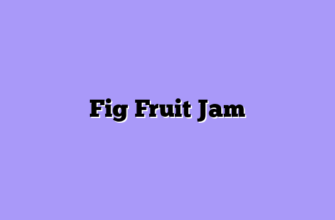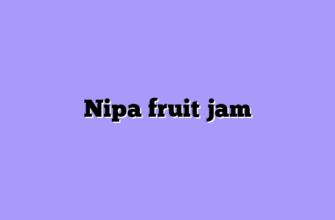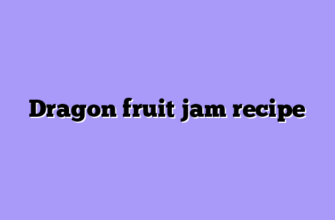You know that moment when you bite into something so extraordinary that it stops you in your tracks? That’s exactly what happened to me fifteen years ago when I first encountered finger limes. I was at a farmer’s market in Brisbane, and this weathered old grower handed me what looked like a stubby green pickle. “Try this,” he said with a knowing grin. I bit into it, and my mouth exploded with tiny caviar-like pearls that burst with intense citrus flavor. That single bite changed the trajectory of my farming career forever.
Fast forward to today, and I’m standing in my own finger lime grove, watching the morning sun filter through the thorny branches of my Citrus australasica trees. These native Australian beauties have become my specialty crop, and let me tell you, turning their precious “citrus caviar” into jam has been one of the most rewarding challenges of my farming life.
From Thorns to Treasures: Growing These Citrus Gems
Growing finger limes isn’t for the faint of heart. These trees are like temperamental artists – they’ll reward you handsomely when conditions are perfect, but they’ll make you work for every single fruit. I learned this the hard way during my first season when I treated them like regular citrus trees. Big mistake.
The secret lies in understanding their native habitat. In the wild, finger limes grow in the understory of Australian rainforests, which means they prefer dappled sunlight rather than the blazing full sun we give most citrus. I’ve had to create microclimates in my grove using shade cloth and strategic plantings. It’s like choreographing a dance between light and shadow.

The harvesting process is where things get really interesting. Each finger lime is about the size of your thumb, and you can’t just yank them off the branch. Oh no, these thorny beauties demand respect. I suit up like I’m going into battle – thick gloves, long sleeves, and protective eyewear. The thorns are vicious, but the reward is worth every scratch and puncture wound.
The Art and Science of Finger Lime Jam Making
Now, here’s where the real magic happens. Making finger lime jam isn’t like making strawberry or grape jam. Those tiny vesicles – the caviar-like pearls inside each fruit – are incredibly delicate. Pop them too early, and you lose that amazing textural experience that makes finger limes so special.
My jam-making process has evolved through years of trial and error. I’ve ruined more batches than I care to admit, but each failure taught me something valuable. The key is treating those little pearls like the precious gems they are.
Here’s my tried-and-true method:
- Selection and Preparation: I only use fruits that are perfectly ripe – they should give slightly when pressed but not be mushy
- Gentle Extraction: Cut each lime lengthwise and carefully scrape out the vesicles with a small spoon
- Minimal Processing: Unlike traditional jams, I barely cook the finger lime pearls – just enough to activate the pectin
- Perfect Timing: The entire cooking process takes less than 10 minutes to preserve those magical bursting pearls
- Temperature Control: I never let the mixture exceed 200°F – any hotter and those precious vesicles turn to mush
The first time I nailed the perfect batch, I literally did a victory dance in my kitchen. The jam had this incredible texture – smooth and spreadable with these tiny explosions of citrus flavor in every bite. It was like eating sunshine captured in a jar.
My Finger Lime Varieties and Their Jam Profiles
| Variety | Color | Flavor Profile | Best Jam Use |
|---|---|---|---|
| Red Champagne | Pink-red vesicles | Sweet-tart, floral notes | Dessert pairings, cheese boards |
| Emerald | Green vesicles | Sharp, zesty, classic lime | Savory applications, seafood |
| Crystal | Clear vesicles | Mild, delicate | Breakfast spreads, scones |
| Burgundy | Deep red | Rich, complex, slightly bitter | Gourmet applications, meat glazes |
Beyond the Jar: The Unexpected Uses That Surprised Me
What started as a simple jam-making experiment has blossomed into something much bigger. Local restaurants began calling, asking for custom flavors. A high-end cocktail bar wanted finger lime jam for their signature drinks. Even a luxury hotel chain reached out about featuring my jams in their breakfast service.
But the real surprise came from my own kitchen experiments. I discovered that finger lime jam works brilliantly in these unexpected ways:
- Glazing meats: The acidity cuts through rich flavors while the pearls add textural interest
- Cocktail ingredient: Bartenders love the visual drama and flavor complexity
- Dessert component: It transforms simple cheesecakes and tarts into conversation pieces
- Marinade base: The natural enzymes help tenderize proteins
- Cheese board accompaniment: The burst of citrus cleanses the palate between rich cheeses
The most memorable moment was when a local chef used my jam in a dish that won a regional cooking competition. Seeing my finger limes, grown with my own hands, transformed into award-winning cuisine was incredibly humbling and proud-making at the same time.
Looking back on this journey, I realize that finger lime jam taught me something profound about farming and life. Sometimes the most extraordinary things come in the smallest, most unlikely packages. Those tiny green fruits, protected by vicious thorns, hold within them pearls of pure citrus joy.
Every jar I make connects my customers to this amazing fruit and to my little corner of agricultural paradise. When someone tastes my finger lime jam for the first time and their eyes light up with surprise and delight – well, that’s the moment that makes all the thorn scratches, failed batches, and early morning harvests worth it.
Who would have thought that those stubby little “citrus pickles” would become my signature crop? Life has a funny way of surprising us, doesn’t it? And sometimes, the best surprises come in the tiniest, most unexpected packages.








